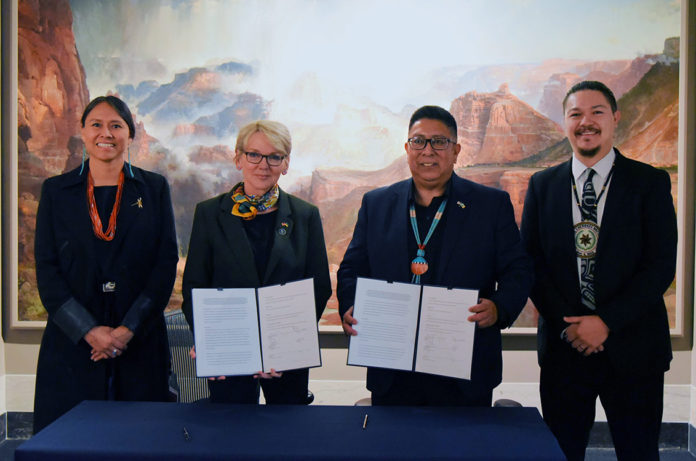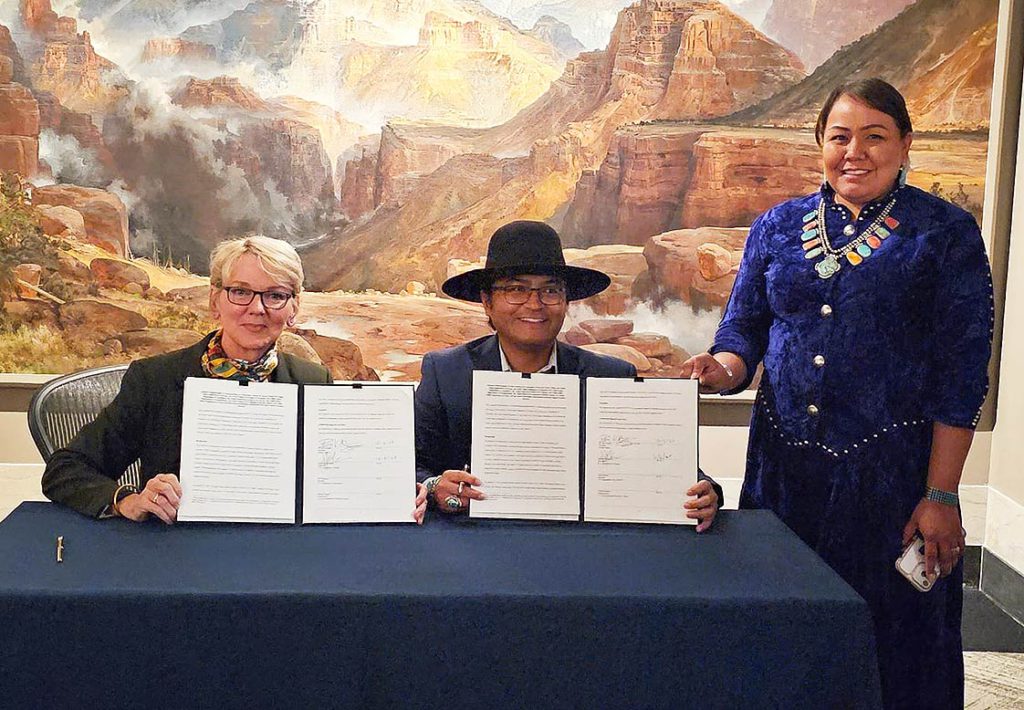
WASHINGTON, D.C. – The U.S. Department of Energy (DOE) and eight federal agencies announced two historic Memorandums of Understanding (MOUs) with the Hopi Tribe and an amended MOU with the Navajo Nation supporting the tribes’ economic revitalization efforts.
The multiyear agreements aim to ease tribal access to federal funding available through national policies including the Creating Helpful Incentives to Produce Semiconductors (CHIPS) and Science Act, the Inflation Reduction Act (IRA), and the Bipartisan Infrastructure Law (BIL), along with programs offered annually by agencies.
“The Office of Indian Energy wanted to create a structure helping ensure tribes can leverage the once-in-a-generation federal funding aimed at increasing prosperity and enhancing well-being in underserved and struggling communities across the United States,” said Office of Indian Energy Director Wahleah Johns. “Tribes like the Navajo Nation and the Hopi Tribe have played a critical role in powering the West for 50 years, and we are excited to support them to lead the way toward this clean energy transition for decades to come.”
The MOUs are the cornerstone of the White House Council of Native American Affairs (WHCNAA) initiative and spearheaded by DOE’s Office of Indian Energy, which is dedicating staff time and resources to facilitate strategic energy and economic planning with tribes.
“Our intent was to amass available federal resources and make sure tribes are aware they exist and can access them,” said Office of Indian Energy Deployment Specialist Dr. Tommy Jones. “Tribal-led non-profits and non-governmental organizations will play a pivotal role, partnering closely with the tribes to secure funding and implement the projects. These organizations have the capacity and motivation to conduct projects.”

Signed by DOE, the Navajo Nation and the Hopi Tribe, the U.S. Department of Education, the U.S. Department of Agriculture, the U.S. Department of the Interior, the U.S. Department of Transportation, the U.S. Environmental Protection Agency, the U.S. Department of Labor, and the Federal Permitting Improvement Steering Council Executive Director, the MOUs launch a multiyear, multiagency effort to boost prosperity and improve quality of life for the Navajo and Hopi people.
The Navajo Nation and the Hopi Tribe have historically produced coal resources to power major cities in Arizona, Nevada, and California. Since the closure of the Navajo Generating Station and Kayenta coal mine in 2019, tribes have lost up to 80 percent of their annual revenues and 1,500 Native American jobs. The goal of the MOUs is to help coordinate federal resources during economic revitalization efforts.
Approximately one year ago, DOE, the U.S. Department of the Interior, and the Navajo Nation signed the original MOU and have since convened more than five meetings on the Navajo Nation. In building relationships through this process, the MOUs enable diverse stakeholders to find common ground and bring different strengths to bear, bridging gaps in capacity that can be barriers to success. For example, tribal entities may have limited experience applying for grants, and non-profits may not be eligible for federal funding.
Between 2010 and 2022, the DOE Office of Indian Energy invested over $120 million in more than 210 tribal energy projects implemented across the contiguous 48 states and Alaska. These projects, valued at more than $215 million, are leveraged by over $93 million in recipient cost share.














































